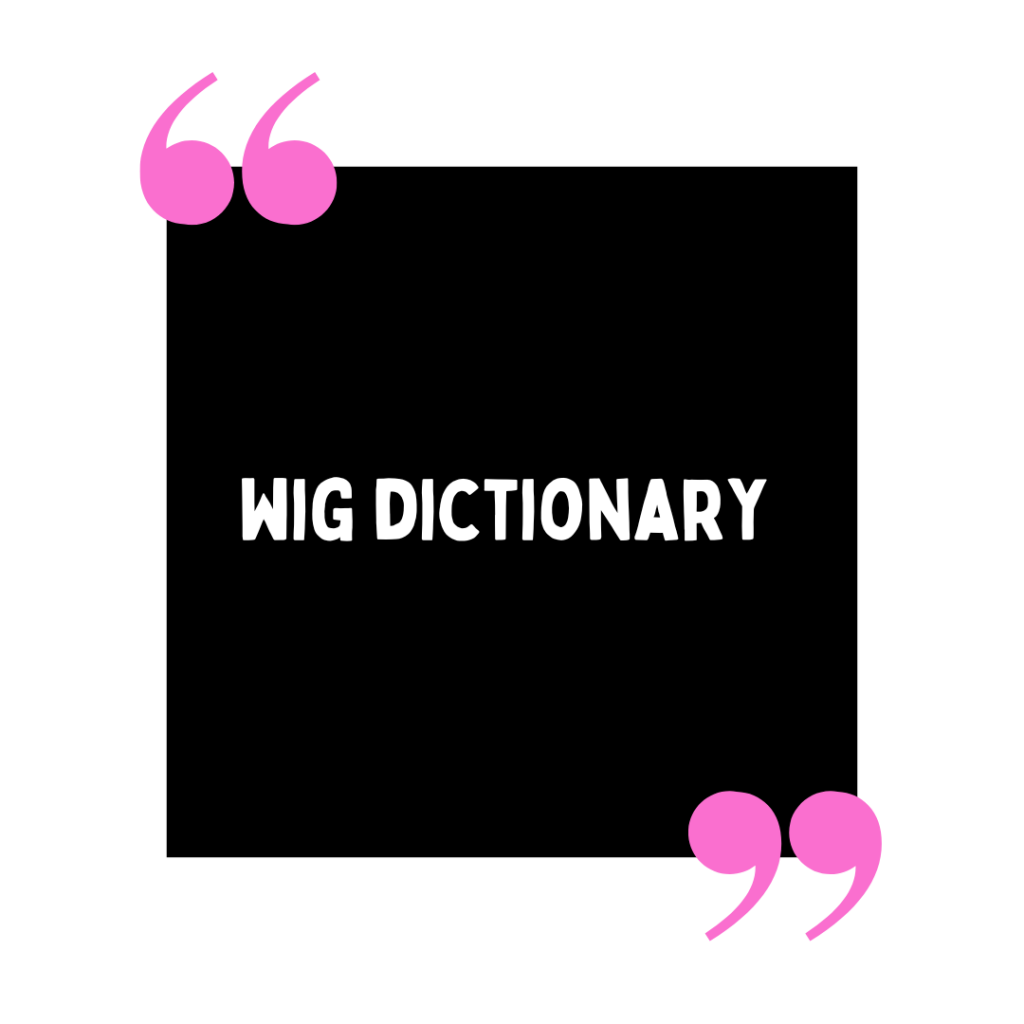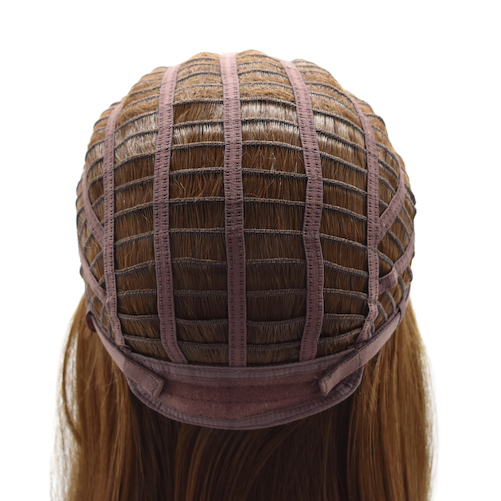Wig dictionary. On today’s blog post, I thought I would make a list of wig terms you may hear a lot.
When I first started wearing wigs I would hear words like permatease, monofilament, open-wefted. And I had absolutely no idea what all that meant. It seemed overwhelming at time for a new wig wearer.
And come join us on TL Wigs private Facebook group to learn more about wearing wigs.
So let me break it down for you. This list is just a start, I am sure I will be adding to it over time.

Wig Dictionary
- Permatease: those little tiny fibers that are bunched together and sit close on the cap. They are what gives that full-volume look on a style. It also helps disguise the wefts.
- Open-wefted: it’s like an organized webbing. It is small sections of fibers sewn together to create rows and columns that construct the sides and back of the wig cap. There is about a half an inch between rows making it “open” and well ventilated. Imaged posted after this list.
- Monofilament: used when talking about the top part of the cap and is a soft mesh that can be placed on the whole top, or as a part on either side or middle of cap.
- Heat-friendly: simply means you can use heat tools like a flat iron or curling iron to change the style of the fibers on the wig. Manufacturers will note how hot the tools should be; typically not higher than 350 degrees. Keep in mind, curling synthetic fibers is different than curling human hair. YouTube videos are out there to instruct.
- Hand-tied: it’s exactly what you think it means and can be over the entire wig or just on the top of wig. A wig maker will hand tie each strand of fiber to wig cap. Obviously, because of this, these types of wigs will be higher in price but well worth it for the comfort.
- Ear Tabs: Some wigs have ear tabs, some do not. The majority of wigs do though. Wigs that have ear tabs have them on each side of the wig and you can use these ear tabs to guide the wig onto your head. They are placed in front of your ears. Some ear tabs have small bendable metal pieces sewn inside the ear tabs so you can adjust accordingly. They are also used to help with a more realistic hairline. And some are velvet-lined!
- Denier: a unit of measurement to determine the thickness of a SINGLE strand of fiber. The higher the denier, the heavier the strand.
- Density: The quantity of strands and how closely they are sewn together on the wig cap.

That’s it for now. Check back later because I may add some more but that’s pretty much the basics.
Learn more about Carol Marks, the blogger. And check out my wig reviews on YouTube.